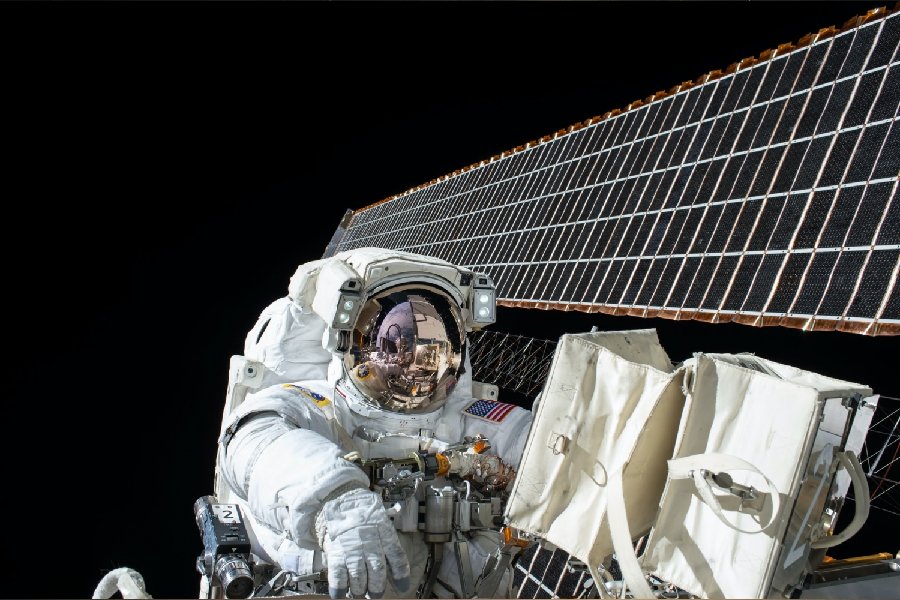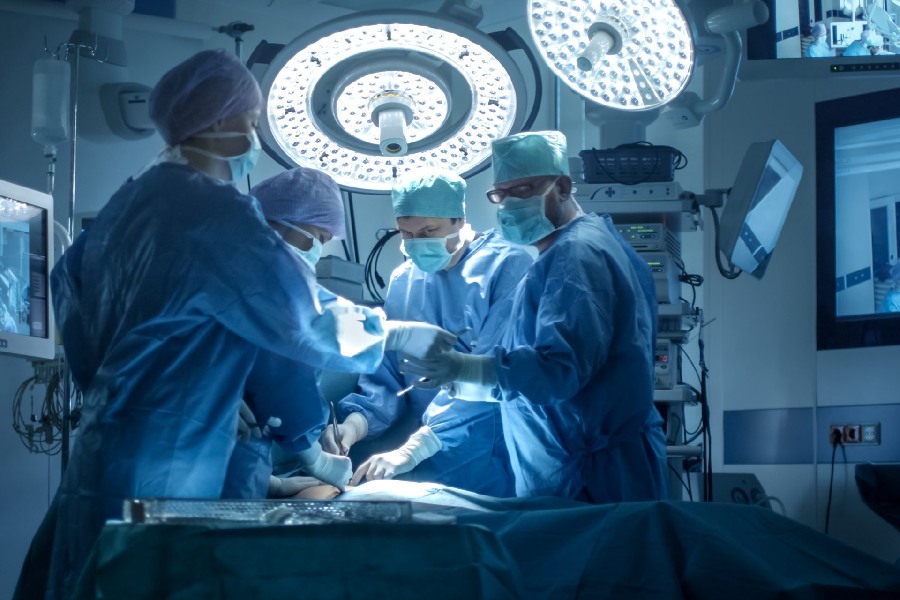We rarely pause to consider how the technology that surrounds us came to be. Yet many common innovations and conveniences can be traced back to research for space exploration. Space programs have brought about remarkable developments in materials, computing, communications, and more.
Often, these technologies eventually find themselves repurposed for civilian and commercial applications here on Earth. They become woven into our everyday lives, benefiting humanity long after their initial development. This process of technology transfer from space research continues on, but its fruits are all around us.
In this article, we will explore some prominent examples of space technology used in everyday life. We will examine how innovations for spaceflight have led to advances in areas from health to transportation to public safety.
Tracing these origins reveals the close connection between the cosmic and the ordinary. While their applications differ, their foundations are shared in the pursuit of knowledge that lifts our sights skyward.

Space Technology Used in Everyday Life
Space technology, initially for space exploration, has integrated into everyday life. The GPS navigation system, originally for spacecraft, is now ubiquitous in phones and cars. Satellite communications have revolutionized telecommunications through services like satellite TV and the Internet.
Space technology has also influenced healthcare. It has done so through NASA spinoff technologies like MRI and CT scans. These imaging techniques use satellite image processing to advance diagnostic medicine.
Even memory foam traces back to astronaut cushions and now resides in many household mattresses.
The seamless integration of space tech highlights its impact on innovation. It has improved numerous aspects of modern living through spinoff technologies that enhance convenience, connectivity, health, and comfort.
Communication and Navigation
GPS (Global Positioning System)
The Global Positioning System provides geolocation and navigation capabilities worldwide. It consists of a network of satellites that transmit precise timing signals. GPS receivers use these signals to pinpoint a user’s location.
Originally developed by the US military, GPS was made available for civilian use in the 1980s. Today, GPS enabled navigation apps on smartphones and in cars provides tracking for transportation logistics and public safety. GPS has become an essential technology for travel and mobility.
The development of GPS required breakthroughs in satellite navigation and precision timing. Atomic clocks on satellites keep time differences used to calculate position. GPS has become integral to modern life by enabling real-time location awareness almost anywhere on the planet.
Satellite communication
Communication satellites play a vital role in global telecommunications infrastructure. They allow services like satellite television, internet connectivity, and mobile communication to reach users worldwide.
Satellites in geosynchronous orbit act as radio relays, connecting ground stations separated by vast distances. Satellite TV expands access and options for broadcasting.
Satellite internet offers connectivity even in remote areas. Satellite phones provide communication beyond the reach of cell towers. These applications demonstrate the versatility of satellite communication.
Weather Forecasting and Monitoring
Weather satellites
Weather satellites provide vital data for forecasting and monitoring weather systems. Their observations cover large areas in real-time, even over oceans. Satellites capture imagery and atmospheric measurements that feed numerical weather models.
Polar orbiting and geostationary weather satellites were developed starting in the 1960s. Today, advanced sensors monitor hurricanes, clouds, winds, and other variables. Weather satellites are essential for accurate forecasts and storm tracking.
Joint polar satellite programs like EUMETSAT demonstrate international cooperation in collecting meteorological data.
Remote sensing
Remote sensing from satellites also enables environmental monitoring beyond weather. Applications include mapping features like vegetation, detecting wildfires, and tracking oil spills.
In agriculture, remote sensing informs crop management. For disaster response, it quickly maps damage. It supports climate change research through long-term Earth observation and provides invaluable data.
Remote sensing data allows creating detailed models and maps. This is useful for urban planning, land use management, and monitoring ecological changes over time. The insights provided by satellite sensors have diverse applications.

Medical Imaging and Healthcare
MRI (Magnetic Resonance Imaging)
MRI leverages physics principles used in NASA’s satellite design to image the human body. Powerful magnets and radio waves produce detailed scans for medical diagnosis and treatment planning.
Since initial development in the 1970s, MRI has become indispensable for identifying tumors, injuries, and other conditions non-invasively. Its origins trace back to space technology. Advances in superconducting magnets and computational power have improved MRI resolution and scanning times.
Telemedicine
Satellite communication enables telemedicine through long-distance consultations and expertise sharing. Doctors can remotely diagnose patients and direct care.
This allows improved healthcare access for isolated areas. Space assets help expand medical outreach, demonstrating practical benefits on Earth and above. Telemedicine expands healthcare access for remote communities and situations like disasters or conflict zones.
Consumer Products and Innovations
Memory foam
Memory foam, originally called temper foam, was created by NASA to cushion aircraft seats. Its heat-sensitive properties conformed to astronauts’ bodies during launch.
After being commercialized in the 1990s, memory foam found use in mattresses and pillows. It provides comfort and support by distributing weight evenly. Memory foam is now a common material in bedding and furniture.
Scratch-resistant lenses
Astronauts’ helmet visors needed scratch protection from space dust and particles. NASA developed coatings hundreds of times thinner than a human hair to resist abrasion.
These durable, transparent coatings were adapted for lenses in eyeglasses, cameras, and mobile device screens. They help prevent scratches and damage during everyday use on Earth.
The coatings contain metal oxide layers that evenly spread impact. This prevents scratches by resisting abrasive damage. The technology transferred from space to consumer optics like glasses.
Energy and Power Solutions
Solar panels
NASA pioneered solar cell technology for spacecraft power generation. Solar panels convert sunlight into electricity through photovoltaic cells.
Adapted solar technology now provides renewable energy through residential solar panels and large-scale solar farms. It offers a clean power solution based on space innovation. Improved solar efficiency and storage address the intermittent nature of solar power.
Fuel cells
Fuel cells have supplied astronaut life support and spacecraft propulsion since the Apollo program. They generate electricity by combining hydrogen and oxygen.
NASA research improved fuel cell efficiency, durability, and size. This technology now powers zero-emission vehicles, provides off-grid power, and holds promise across industries. Fuel cells produce only water as waste, making them quiet and low-emission energy sources.
Advancing Ground Transport
Simulating safety
Computer modeling plays a vital role in spacecraft design by simulating performance across flight scenarios. Advanced simulations enable testing vehicles in extreme environments without risk. Models assess structural limits, failure points, and rescue plans.
Adapted simulation technology now aids automobile safety engineering on Earth. Virtual crash testing identifies risks and validates mitigation strategies before physical trials. Computer modeling makes transportation safer.
Heat resistance
The Space Shuttle orbiter employed specialized tiles to withstand searing reentry temperatures up to 3,000°F. Durable surface materials like reinforced carbon-carbon drew from research into heat shields. These innovations now inspire designs for hypersonic aircraft that can fly at speeds over Mach 5.
Ultra-high temperature materials and surface coatings developed for spaceflight may enable the next generation of rapid global transit vehicles. Applied research aims to surmount friction and heating barriers confronting transatmospheric flight.
Self-driving systems
Piloting spacecraft requires sophisticated autonomy with remote oversight. Space programs advanced early robotics, programming and sensor arrays guiding vehicles in harsh conditions. Self-sufficient navigation and maneuvering capabilities were developed for distant space probes and Mars rovers.
Now the cutting edge orbital and surface traverse technologies nurture fledgling terrestrial autonomous cars. Self-driving fleets now have advanced technology like laser, camera, and radar sensors combined with AI.
Conclusion
As we’ve seen, space technology now permeates our everyday lives in myriad ways. While originating in the pioneering work of space programs, these innovations have transcended their initial applications to benefit all humanity.
We encounter this transferred space technology through weather forecasts, medical imaging, global communications, and much more. The problem-solving necessities of space exploration yielded developments that improved life on Earth across many domains.
Through this article, we have only glimpsed the extensive space technology used in everyday life. While its cosmic origins may now fade into the background, the revolutionary impacts of space research surround us. As space agencies reach farther, we will continue benefiting from the fruits of their labor in our ordinary lives.
